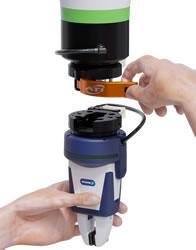Slamcore extends its spatial intelligence to Texas Instruments Arm®-based processors
Slamcore announces that its spatial intelligence algorithms have been optimized for the Texas Instruments (TI) TDA4x family of processors. Combining Slamcore's Spatial Intelligence software with the TI TDA4x processor family enables highly accurate and robust localization, mapping and perception suitable for a range of industrial robotics and automation tasks.
ProMat 2023 in Chicago, demonstrated the significant interest in robotic and autonomous solutions in supply chain and manufacturing logistics. The combination of Slamcore software and TI silicon, plus off-the-shelf, low-cost sensors represents a compelling solution that will open the door to developers looking to launch robots and autonomous machines at commercial scale in this segment.
Built for high performance vision applications, the TDA4VM uses an integrated SoC architecture to enable real-time perception, control and safety capabilities in autonomous mobile robots and autonomous guided vehicles, while also helping to reduce design complexity and cost. Today's announcement will allow many developers to rapidly short-cut the integration of spatial intelligence into designs featuring this chip. The new hardware/software combination has been proven in rigorous testing and has demonstrated its capability to create highly detailed, accurate 2.5D maps in real-time using an Intel RealSense depth camera.
"TI is one of the foremost developers of microprocessors for industrial robotics," said Owen Nicholson, founder and CEO of SLAMcore. "We are proud to have optimized our software to work with the TDA4x family of processors and thus bring our cutting-edge spatial intelligence to the many developers for whom TI processors are the first choice."
Featured Product

